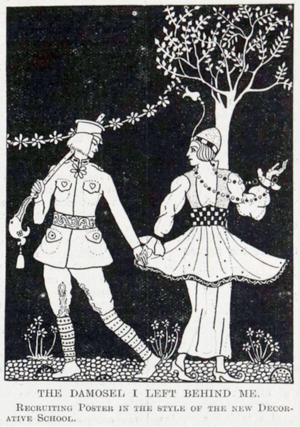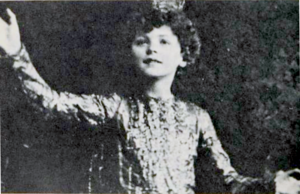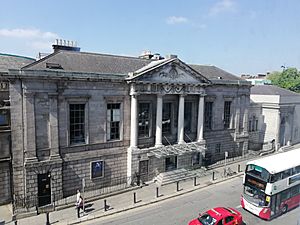Micheál Mac Liammóir facts for kids
Quick facts for kids
Micheál Mac Liammóir
|
|
|---|---|

Mac Liammóir in The Importance of Being Oscar
|
|
| Born |
Alfred Lee Willmore
25 October 1899 Willesden, Middlesex, England
|
| Died | 6 March 1978 (aged 78) Dublin, Ireland
|
| Occupation | Actor, author, playwright, painter, poet, impresario |
| Known for | Co-founding the Gate Theatre |
Micheál Mac Liammóir (born Alfred Willmore; 25 October 1899 – 6 March 1978) was a famous actor, designer, writer, and theatre manager in 20th-century Ireland. He was born in London to an English family. However, when he grew up, he moved to Ireland. There, he changed his name and created a new Irish identity for himself. He lived in Ireland for the rest of his life, becoming a well-known figure in the arts.
With his partner, Hilton Edwards, Micheál Mac Liammóir helped start the Gate Theatre in Dublin. He became one of the most recognized people in Irish arts. Besides acting at the Gate Theatre and around the world, he also designed many plays. He wrote eleven plays, and published stories, poems, and travel books in both Irish and English. He was famous for his three one-man shows, especially The Importance of Being Oscar (1960). This show was performed over 1,300 times!
Contents
Life and Career Highlights
Early Years and Acting Debut
Micheál Mac Liammóir was born Alfred Lee Willmore in Willesden, London. He was the youngest child and only son in his family. He started primary school in Willesden. Later, he attended a children's theatre school run by Lila Field. He became a professional actor at just twelve years old. His sister, Marjorie, helped with his education and traveled with him.
In 1911, he made his first stage appearance as King Goldfish in a play called The Goldfish. Another child actor, Noël Coward, was also in the play. Mac Liammóir learned a lot from this early experience. He learned how to move on stage and understand acting cues. He also learned about using greasepaint (stage makeup). That same year, he worked for Sir Herbert Tree. He played Macduff's son in Macbeth. Tree taught him that charm alone was not enough for acting.

During the Christmas season of 1911, he played Michael Darling in Peter Pan. In 1912, he played Oliver Twist in a stage version of the famous novel. After a few more child roles and four silent films, he stopped acting for a while. He spent a summer in Spain, where he learned to speak Spanish fluently. Then, he studied painting at Willesden Polytechnic and the Slade School of Art.
While studying art, he took Irish language classes with a friend. They became very interested in the Irish Literary Revival. This was a time when Irish writers and artists celebrated Irish culture.
Moving to Ireland and a New Identity
In 1917, Mac Liammóir, then known as "Michael Willmore," briefly returned to acting. Soon after, he moved to Ireland with his friend Mary O'Keefe and her mother. Mary needed fresh air for her health. Mac Liammóir also wanted to avoid being called to join the army during the First World War.
In Ireland, Mac Liammóir worked as an illustrator for newspapers and books. He also acted and designed for local theatres. He quickly became part of Irish culture. He supported Sinn Féin, an Irish political party, in the 1918 election. In 1922, he published his first book, a collection of stories in Irish. He started using different Irish versions of his name. He also created a new story about his background, pretending he was born in Cork, Ireland.
For most of the 1920s, Mac Liammóir lived with the O'Keefes. They traveled to Switzerland and France for Mary's health. He had successful art shows in galleries. In 1925, he starred in a silent film called Land of Her Fathers.
After Mary O'Keefe passed away in 1927, Mac Liammóir returned to the theatre. He joined his sister Marjorie's husband's touring company. He played many Shakespearean roles. On tour, he met Hilton Edwards, another young English actor. They became lifelong partners in both their personal and professional lives. Mac Liammóir and Edwards decided to live in Dublin and open their own theatre.
Founding the Gate Theatre
In 1928, Mac Liammóir wrote, directed, designed, and starred in Diarmuid and Gráinne. This play opened the Irish language theatre, An Taibhdhearc, in Galway. He later produced twenty more plays there.
Also in 1928, Mac Liammóir, Hilton Edwards, Daisy Bannard Cogley, and Gearóid Ó Lochlainn founded the Gate Theatre Studio. It later became known simply as the Gate Theatre. They rented the Peacock Theatre and opened the Gate Theatre Studio on October 14, 1928. Their first play was Peer Gynt. Mac Liammóir acted in and designed almost 300 plays there. In 1930, the company moved to its own home on Cavendish Row.
At the Gate, Mac Liammóir acted in many different plays. These included works by Shakespeare, Ibsen, and Eugene O'Neill. The Gate Theatre also showed new and experimental plays by writers like Oscar Wilde, George Bernard Shaw, and Noël Coward. Mac Liammóir and Edwards helped new Irish writers and young actors like Orson Welles start their careers.
In 1935, Mac Liammóir and the Gate company performed in London's West End. Critics praised his performance as Hamlet. The Gate Theatre was known for its diverse plays, unlike the more traditional Abbey Theatre in Dublin.
Later Years and Achievements
Mac Liammóir stayed in Ireland during the Second World War. After the war, he returned to London with his own play, Ill Met by Moonlight. Later, the company performed on Broadway in New York. In 1951, he played Iago in Orson Welles's film version of Othello. Mac Liammóir was a bit older for the role, but Welles wanted Iago to be an older man.
In 1954, Mac Liammóir played Brack in Hedda Gabler in London. Most of his work continued at the Gate Theatre. In 1959, he returned to New York to perform in Much Ado About Nothing.
His biggest success came in 1960 with his one-man show, The Importance of Being Oscar. This show received amazing reviews and was very popular. He performed it over 1,300 times between 1960 and 1975. He also created two other one-man shows: I Must Be Talking to My Friends (1963) and Talking About Yeats (1970). In 1963, he was the narrator for the Oscar-winning film Tom Jones.
In his later years, Mac Liammóir began to share the truth about his origins. He admitted to interviewers that he was not born in Cork. Despite some challenges in Ireland at the time, his partnership with Hilton Edwards was widely accepted. In 1973, they were both given the Freedom of the City of Dublin. This was a special honor, and they were the first theatre people to receive it. Mac Liammóir also received the Lady Gregory Medal for literature in 1960. He got an honorary doctorate from Trinity College in 1963.
Mac Liammóir's last stage performance was in 1975 at the Gate Theatre, in The Importance of Being Oscar. He passed away at his home in Dublin on March 6, 1978. The President of Ireland attended his funeral, showing how much he was respected.
Legacy and Works
Plays Written by Mac Liammóir
Micheál Mac Liammóir wrote many plays, including his famous one-man shows. He also adapted several classic stories for the stage.
|
|
|
Books by Mac Liammóir
He also wrote several books, including memoirs and travel stories.
|
|
|
Films Featuring Mac Liammóir
Micheál Mac Liammóir appeared in several films throughout his career.
|
|
Biographies and Tributes
Many books have been written about Micheál Mac Liammóir's life and work. These include The Importance of Being Micheál by Micheál Ó hAodha and The Boys: A Double Biography by Christopher Fitz-Simon.
Documentaries have also been made about him. In 1985, Orson Welles narrated Two People... With One Pulse, a film about Mac Liammóir and Edwards. The BBC created Dear Boy: The Story of Michéal Mac Liammóir in 1999 to celebrate his 100th birthday.
His life has inspired several plays, such as John Keyes's The Importance of Being Micheál (1990) and Frank McGuinness's Gates of Gold (2008). The annual Dublin Gay Theatre Festival gives out the "Michéal Mac Liammóir Award" for outstanding male performances.



